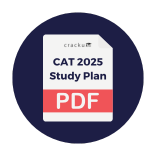Each of the bottles mentioned in this question contains 50 ml of liquid. The liquid in any bottle can be 100% pure content (P) or can have certain amount of impurity (I). Visually it is not possible to distinguish between P and I. There is a testing device which detects impurity, as long as the percentage of impurity in the content tested is 10% or more.
For example, suppose bottle 1 contains only P, and bottle 2 contains 80% P and 20% I. If content from bottle 1 is tested, it will be found out that it contains only P. If content of bottle 2 is tested, the test will reveal that it contains some amount of I. If 10 ml of content from bottle 1 is mixed with 20 ml content from bottle 2, the test will show that the mixture has impurity, and hence we can conclude that at least one of the two bottles has I. However, if 10 ml of content from bottle 1 is mixed with 5 ml of content from bottle 2. the test will not detect any impurity in the resultant mixture.
There are four bottles. It is known that either one or two of these bottles contain(s) only P, while the remaining ones contain 85% P and 15% I. What is the minimum number of tests required to ascertain the exact number of bottles containing only P?
The bottles could possibly be :
Case - 1 Pure, Impure, Impure, Impure.
Case-2, Pure , Pure, Impure, Impure.
Since the concentration in the impure bottle is 85 percent.
In case 1 when equal volumes from all the bottles are considered and mixed. The test result detects the impurity..
Since the overall concentration of impurity is greater than 10 percent.
Considering 10 ml from all four bottles.
The impure concentration is 4.5ml/40ml which is greater than 10.(15ml*3 = 4.5ml) (Impurity is detected)
For case 2 when all four bottles are considered. The case here has 2 pure and 2 impure bottles.
When equal volumes from all four bottles are mixed. The resultant concentration of impurity when 10 ml from each of the four solutions is considered :
The impure concentration is 3ml/40ml which is less than 10 percent.. (1.5ml*2 = 3ml). (Impurity is not detected.)
Hence in one possibility the impurity is detected and not detected in the other case. A single test is enough based on the results of which the number of pure and the number of impure bottles can be identified.
Video Solution

Create a FREE account and get:
- All Quant CAT complete Formulas and shortcuts PDF
- 38+ CAT previous year papers with video solutions PDF
- 5000+ Topic-wise Previous year CAT Solved Questions for Free




